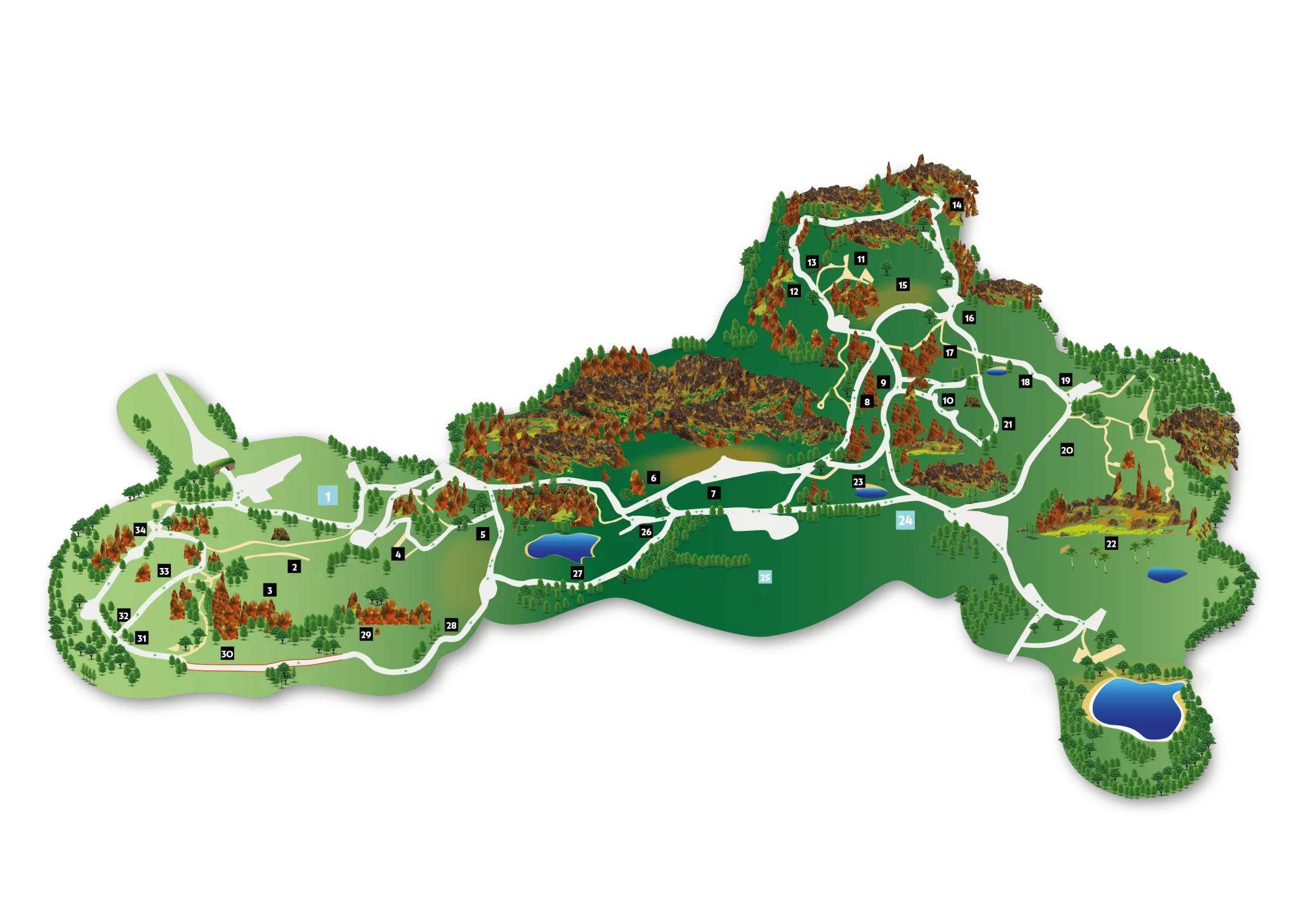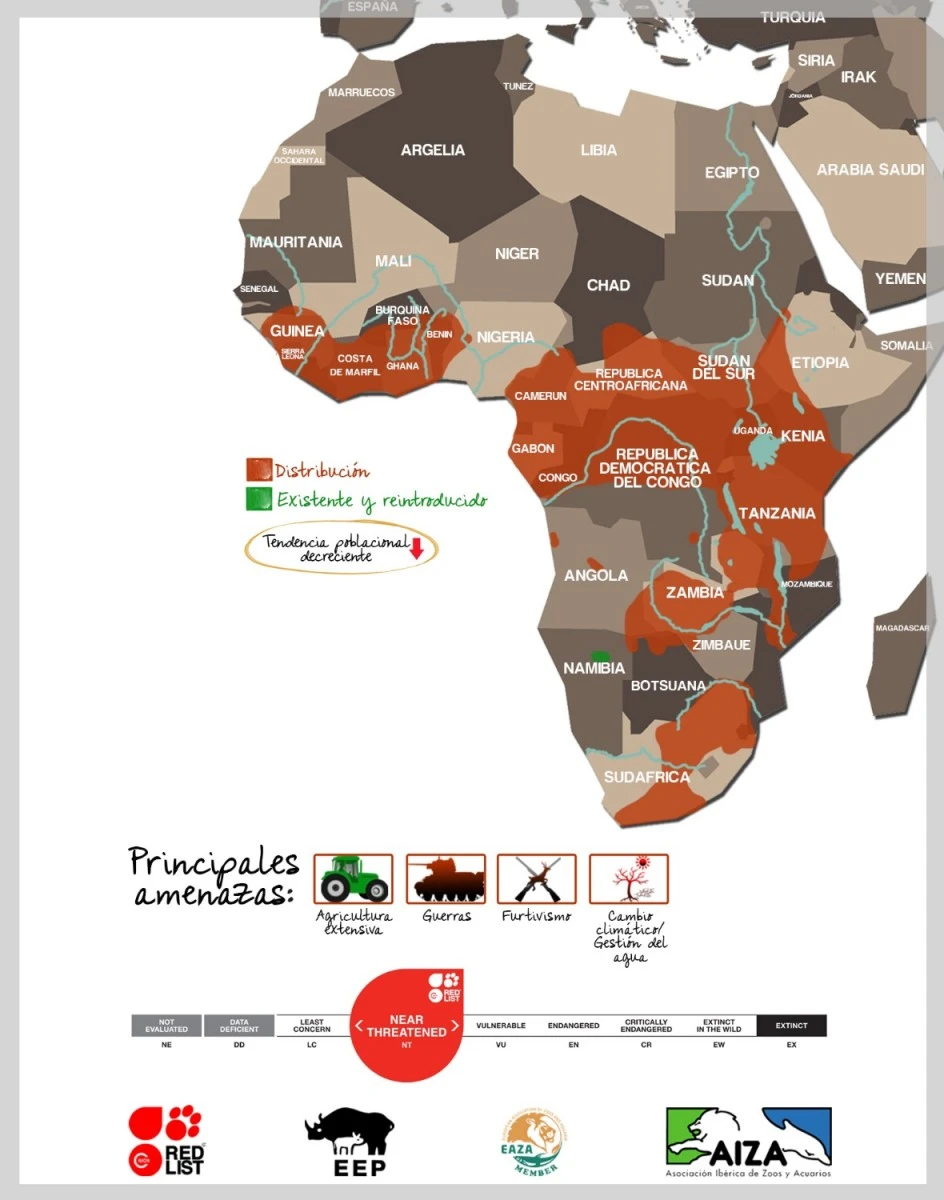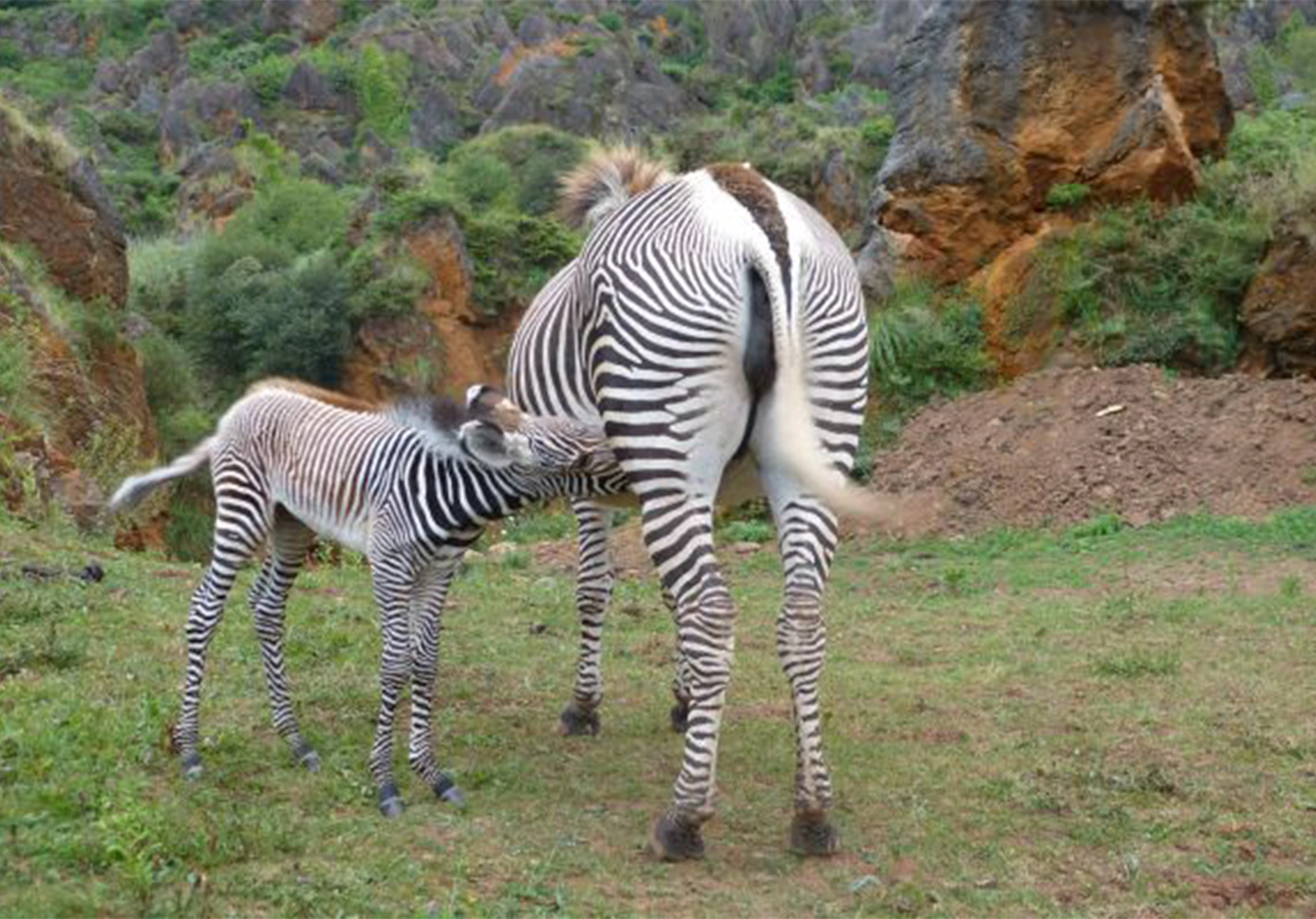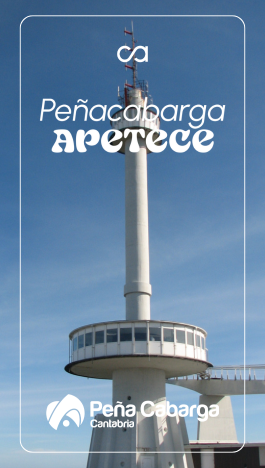
Also known as the Royal Zebra, it is the largest of all zebra species. It is distinguished by its coat with narrow, vertical stripes, of white and black colors, which curve upwards on the rear part of the body. Its belly and the base of its tail are completely white. These stripes are believed to have several functions, among them, facilitating social recognition, regulating body temperature, and confusing predators.
This species inhabits northern Kenya and some small areas of southern Ethiopia, although historically it was found in broader regions of East Africa.
Regarding their social behavior, males do not form permanent harems; instead, they wait for a group of females to approach their territory in search of water and pasture. Water plays a fundamental role in the life of Grevy’s zebra, determining their daily, seasonal, and territorial activities. Living in arid areas, water points are often distant from the best grazing grounds, forcing zebras to separate from the herd. Lactating females, in particular, need water at least every two days.
Males do not participate in the care of the young; the female is solely responsible for this task. After birth, the foal quickly bonds with its mother, recognizing her scent, appearance, and specific vocalizations. The foal follows the mother and can recognize her by the stripes on her hindquarters. Each Grevy’s zebra (as well as the other zebra subspecies) has a unique stripe pattern, which makes them a ‘type of fingerprint’ for the species.
Currently, not only their natural predators put this species at risk, but the population faces other threats such as habitat destruction due to livestock overgrazing and water scarcity due to climate change which causes lack of precipitation.
Cabárceno Park has been a pioneer in the conservation of Grevy’s zebra, establishing the first successful breeding nucleus for this species in Spain. The first Grevy’s zebra was born in the park in 2013, a significant milestone that marked the beginning of a successful captive breeding program for this endangered species. Since then, the park has achieved several births, contributing significantly to the preservation of the species, a crucial role in its conservation.
The enclosure inhabited by Grevy’s Zebras in Cabárceno is undoubtedly the one that best adapts to their physical and behavioral characteristics, as being a mountain zebra, its orography notably contributes to their well-being.








































































